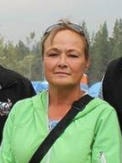Most Burns Lake residents who hike or hunt in the bush, or drive on local roads say there are fewer moose than before.
Several causes are raised to explain the decline, including excessive hunting, train collisions and habitat loss.
According to official figures, the moose population has declined by 13 per cent from 2012-2018 in an area of the Bulkley Valley included in a recent study, Jeremy Uppenborn, Media Relations Officer with the Ministry of Forests, Lands, Natural Resource Operations and Rural Development (FLNRORD) told Lakes District News.
“Over the same period, there was a 25 per cent decline in the bull-to-cow ratio, and there was a 16 per cent decline in the calf-to-cow ratio,” Uppenborn added.
A detailed report covering 2012-2018 “Determining factors affecting moose population change in British Columbia” by the FLNRORD found that the animals’ decline “happened concurrently with a Mountain Pine Beetle outbreak that killed a large proportion of mature pine trees and resulted in increased salvage logging and road building.”
The report didn’t offer conclusive causes for moose declines but pointed out that more salvage logging and road construction reduced moose habitat.
That in turn made the ungulates more vulnerable to hunters, predators and environmental conditions.
But those numbers and analyses are not quite right, according to the research of John Henderson, President of the Wildlife Stewardship Council (WSC).
“The province is using data that is 20-30 years old about the animals,” said Henderson, who believes moose numbers are actually down by 40 per cent.
The main cause of the lower moose population is not just over hunting, but more intensive hunting enabled by more effective guns, more road construction and hunters’ faster vehicles that have raised the hunt success rate to 90 per cent, from 59 per cent a decade ago.
The WSC President said the animals’ ability to recover their population is weakened by the province giving out more hunting tags than is sustainable.
“The animals really don’t have a chance anymore. We need to make changes and that includes everybody, all facets of the hunt. We need to sustain ourselves in the future,” he said.
After last summer’s wildfires in the Burns Lake region the moose have tended to congregate in green areas near water, making them easy targets for hunters, said Cheslatta Carrier Nation Chief Corrina Leween.
But the chief believes there has been too much hunting and she supports a moratorium for non-residents.
“I’m mainly against the issuing of [hunting] permits to non-residents. I don’t mean the Burns Lake people. It’s not forever. It’s until the population comes back,” she explained.
Leween is particularly concerned by non-resident trophy hunters whose methods she considers careless.
“They go for the bulls. Last year we had a report that one hunter wounded two moose and was skinning one while the other was dying. It’s a kind of abuse.”
